What is facial recognition and how does it work?
People are already using facial recognition in their everyday lives. Unlocking phones. Checking bank accounts. Tagging in social media. Both consumers and companies are benefiting from advances in artificial intelligence (AI) and machine learning-enabled facial recognition. But what exactly is it and how does it work?
Facial recognition—a biometric form of artificial intelligence identification checking done by recognizing facial features—has changed the face, quite literally, of identification. It’s big business and getting bigger.

The facial recognition market value is expected to reach $8.5 billion by 2025 — a significant growth
from $3.8 billion in 2020. Meanwhile, the emotion detection or emotion recognition market [an
offshoot of facial recognition] is projected to reach $37 billion
by 2026.
The facial recognition market value
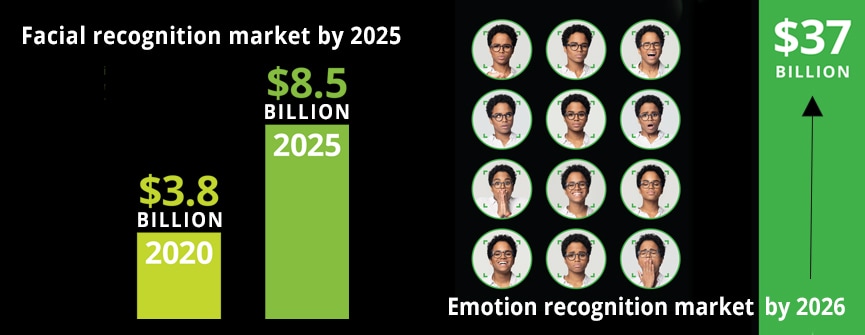
Humans intuitively read human emotions by glancing at someone’s face
Facial recognition is used to either identify people in a 1=n relationship (who are you?) or to verify people in a 1=1 relationship (are you who you say you are?). Facial recognition works its magic in three seemingly simple steps: detection, analysis and recognition.
Humans intuitively read human emotions by glancing at someone’s face. Now, facial recognition technology can too. It’s often called emotion recognition. AI matches facial expression to an already learned emotion and uses that to complete its task more effectively. For example, if someone is at a self-checkout counter and starts to have trouble, frustration typically comes over their face. A camera captures that image and alerts a customer service representative to come help. It could also be used to track the metrics of smiling customers at the front desk of a hotel. Executives could then see when customer satisfaction dips and identify the root cause, like shift changes.
What is facial recognition and how does it work?
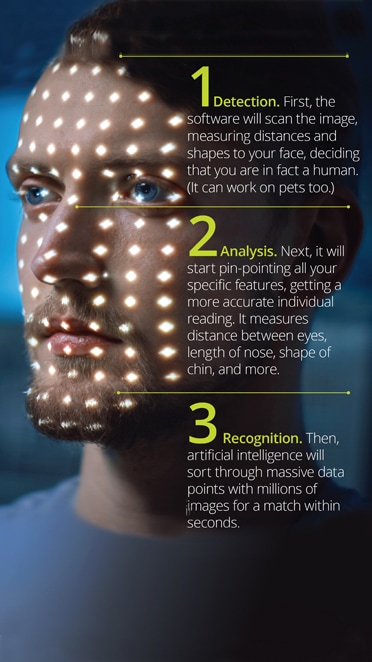
The technology isn’t 100 percent perfect, but it’s getting closer—and talk about a world of good
People are already using facial recognition in their everyday lives. Unlocking facial recognition has received a lot of attention around the errors and biases that were uncovered as law enforcement first started using it. It’s true that facial recognition technology isn’t 100 percent perfect. It can have both false positives and false negatives. It also proved to be less accurate with people of certain sex, ethnicities and even countries it was less familiar with as it first debuted. The good news is, it’s a lot more sophisticated now than it was a decade ago.
A close look at data from a new National Institute of Standards and Technology (NIST) report reveals that the best facial recognition algorithms in the world are highly accurate and have vanishingly small differences in their rates of false-positive or false-negative readings across demographic groups
The technology isn’t 100 percent perfect, but it’s getting closer
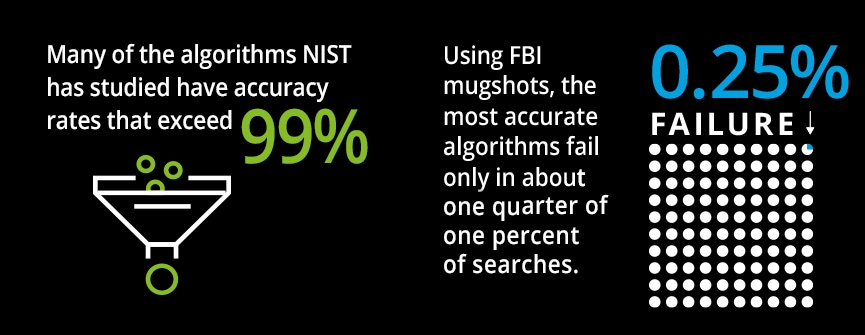
Goodness for consumer
Facial recognition is real, it is impacting all of us, and it can bring goodness and opportunity to consumers and companies alike.
Start your car. Unlock your house. Check in at work or school just by passing through a doorway. With the development of advancing facial recognition, this is all possible in a blink of an eye.
It’s remarkably different. Laptops and smart phones use facial recognition to allow users to easily unlock the devices and open secure apps. The use of facial recognition in cars will change the consumers experience significantly by starting cars, making keys virtually obsolete, and allowing for a personalized consumer-based encounters by changing the seat settings and even the music.
Punching time clocks and taking attendance at school may become things of the past. Lost child at an amusement park? Facial recognition can help find not just them, but missing pets, too.
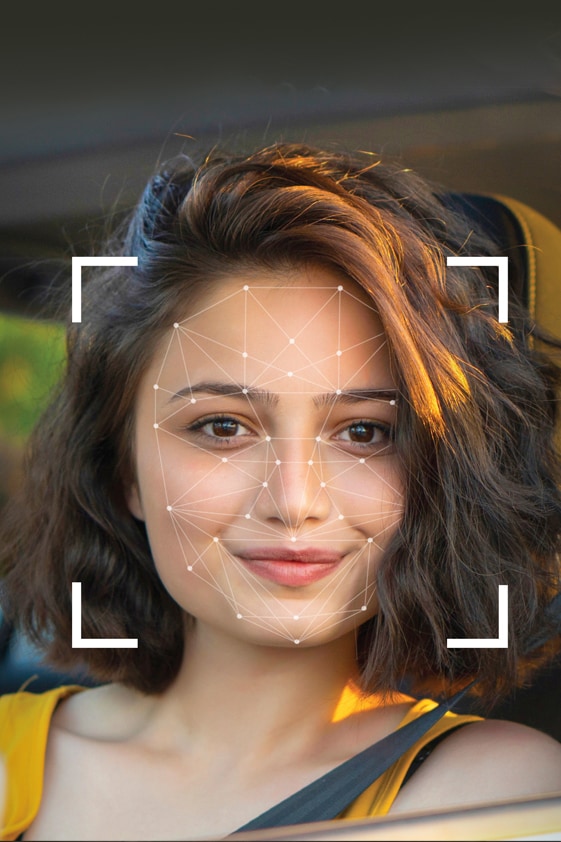
Goodness for organizations
Imagine walking down a street or in a store as ads on billboards shift to your every wish. Imagine walking into a hotel and are immediately recognized as a VIP guest. Facial recognition intelligence can vitally change the way organizations operate.
The retail and hospitality industries can now better tailor in-building customer experiences, which fosters loyalty and thus makes people more likely to purchase items. The health care industry is using it to identify genetic disease via facial features that are so subtle they are difficult for humans to recognize.
Facial recognition can make not only our online world but also our actual world more secure. Manufacturing companies can use emotion recognition to signal accidents on assembly lines, getting help to workers faster. Law enforcement agencies all over the world have been using facial recognition software successfully in aiding investigations and arrests. In the banking industry, ATMs are implementing the use of facial recognition to protect against fraud. In travel and transportation, the software can add convenience and track potential danger by tracing travelers passing from security and onto planes. It also makes entry into places of business and stadiums more secure.
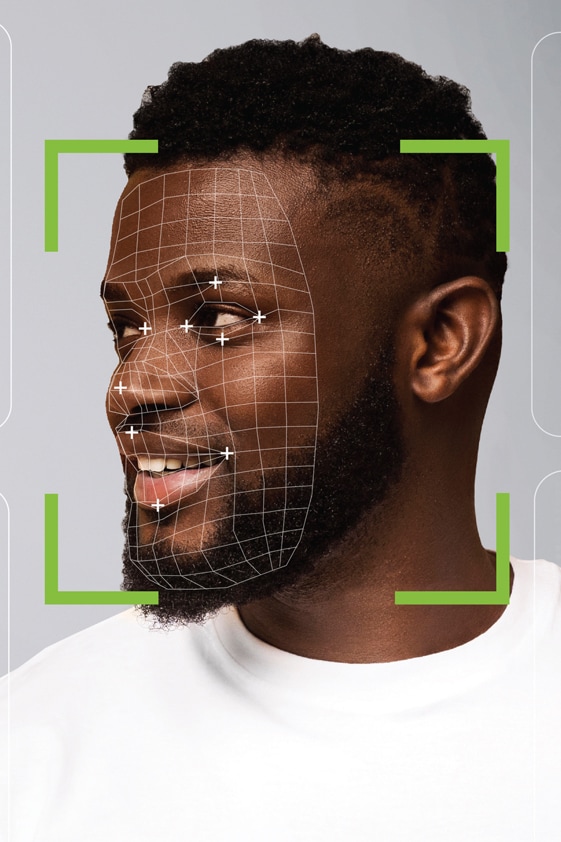
Governance for good becomes mission-critical
While the benefits of facial recognition for business are substantial, there are potential roadblocks and pitfalls as with any new technology. Companies should govern facial recognition like any other use of artificial intelligence and keep in mind the safety and security of their consumers.
Proactively monitoring regulation and addressing privacy and ethical concerns are of top priority as well as mitigating unintended bias in the algorithms. For example, early renditions of facial recognition didn’t detect dark faces as well as light ones.
- Stay ahead of regulatory and legal issues. Currently there are efforts at the national and state levels to push for more regulation and security.
- While there are no facial recognition laws at the federal level today, several are being considered. Individual states, however, have been more successful in passing legislation.
- Proactively address ethical and privacy concerns: There are ethical questions around many uses of artificial intelligence. The matter is no different with facial recognition.
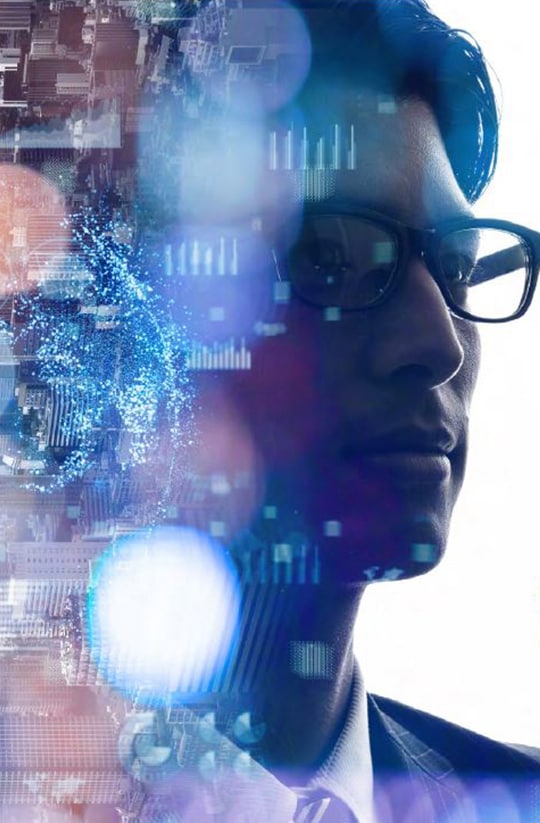
Benefits abound: Here's why it's here to stay
Convenience, safety and security. The development of
high-accuracy facial
recognition is changing the face of convenience. Convenience is what will make consumers keep coming
back and asking for more.
Consumers also enjoy the benefits of facial recognition from a safety and security perspective. From airports to seaports and city streets to store fronts, facial recognition is being used to protect citizens from potential danger.
Customer satisfaction, relevance and revenues. For companies, facial recognition aids in both engaging the customer and improving segmentation and targeting capabilities.
Download the REPORT

The benefits of facial recognition create an interlocked and secure world of good that both consumers and companies will love.


